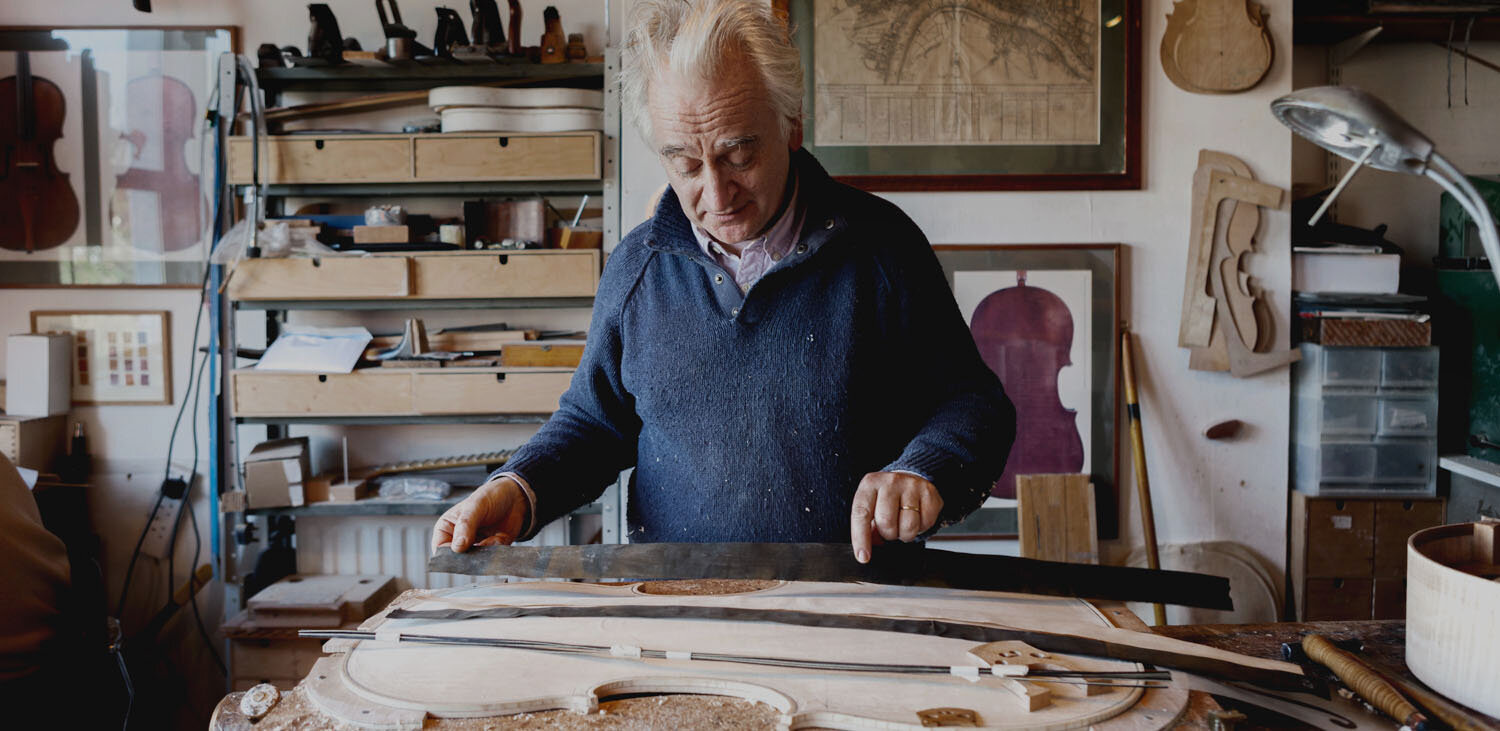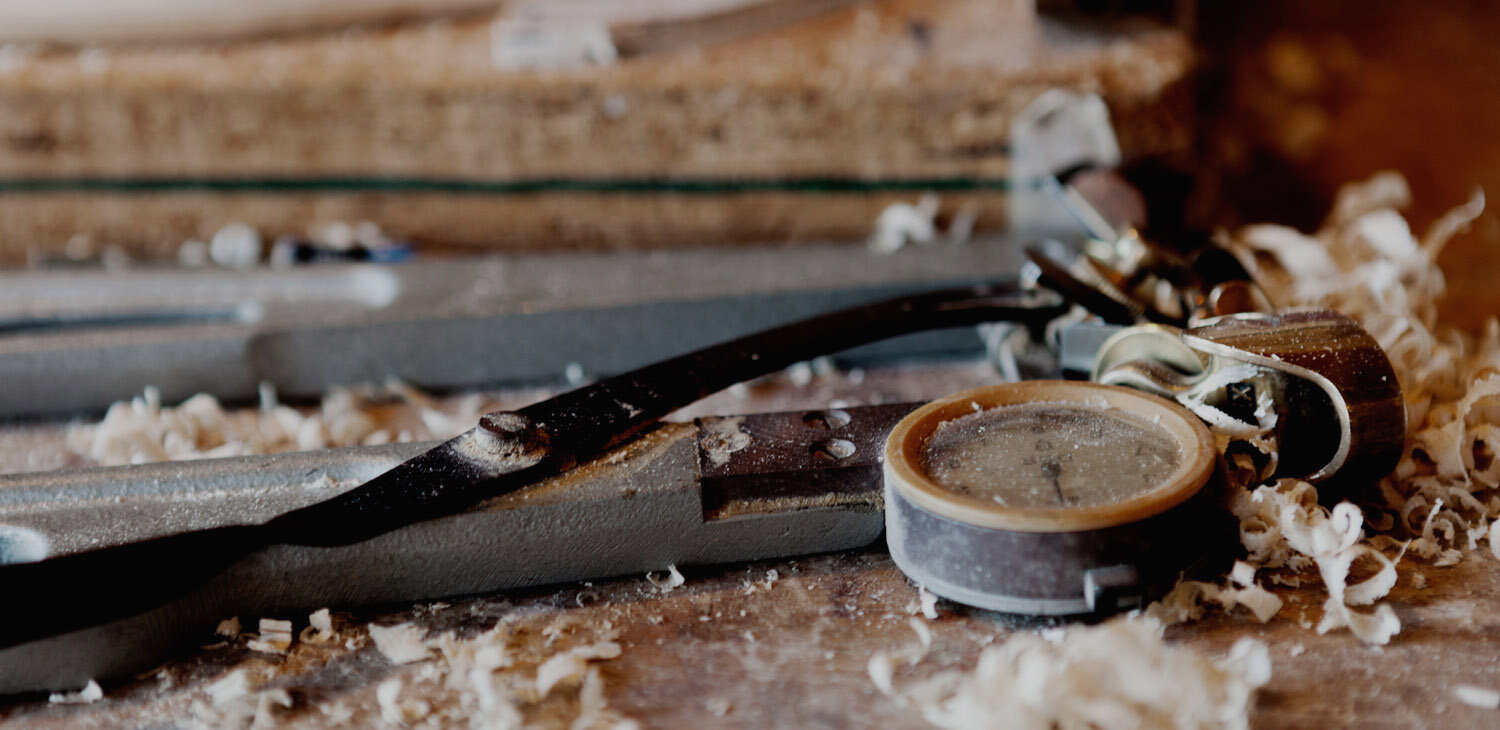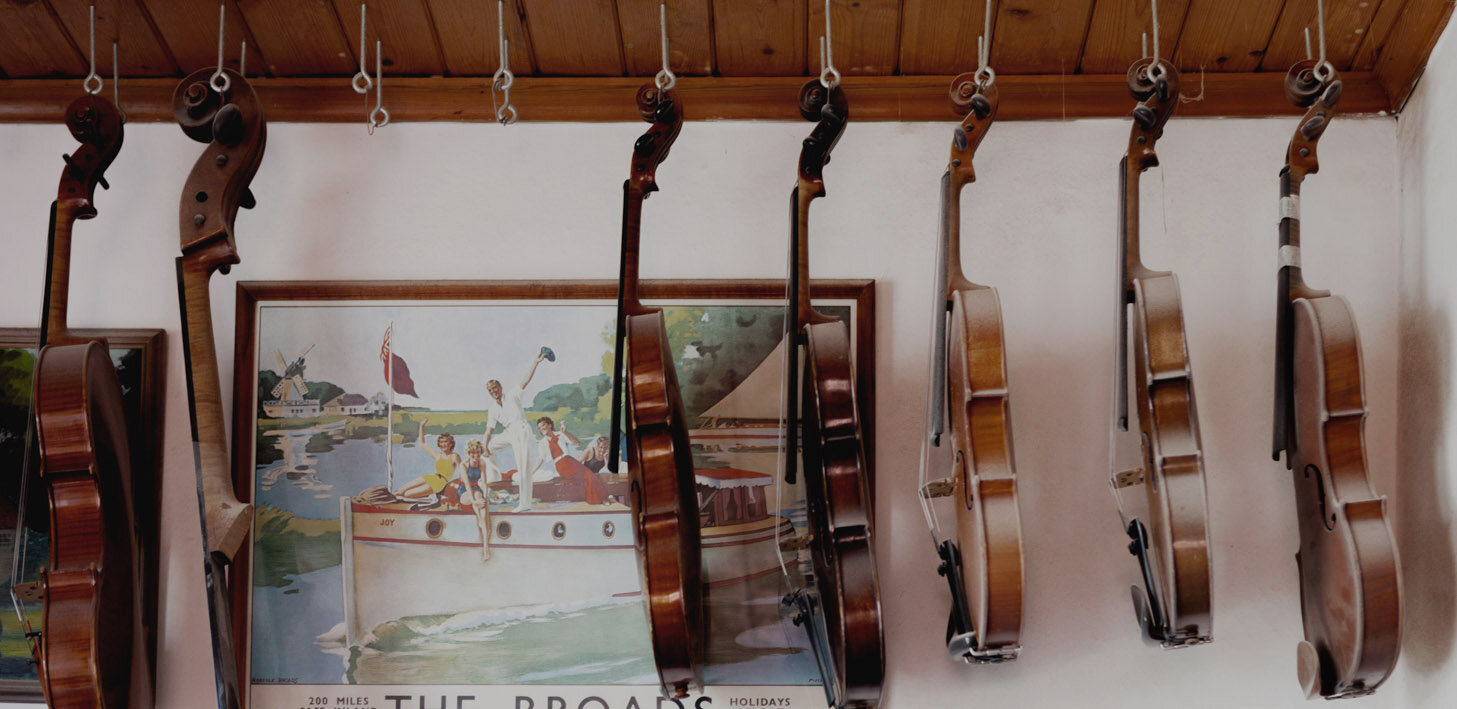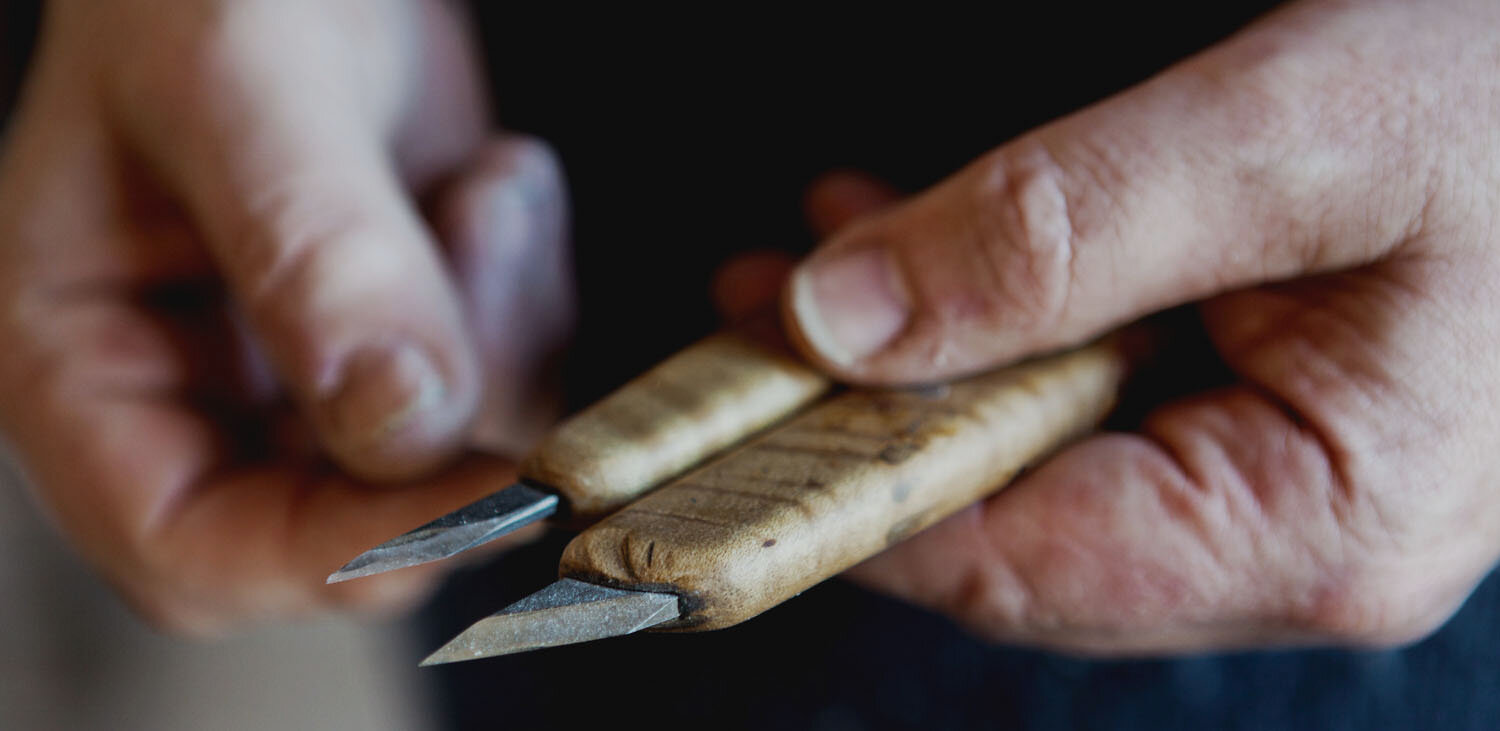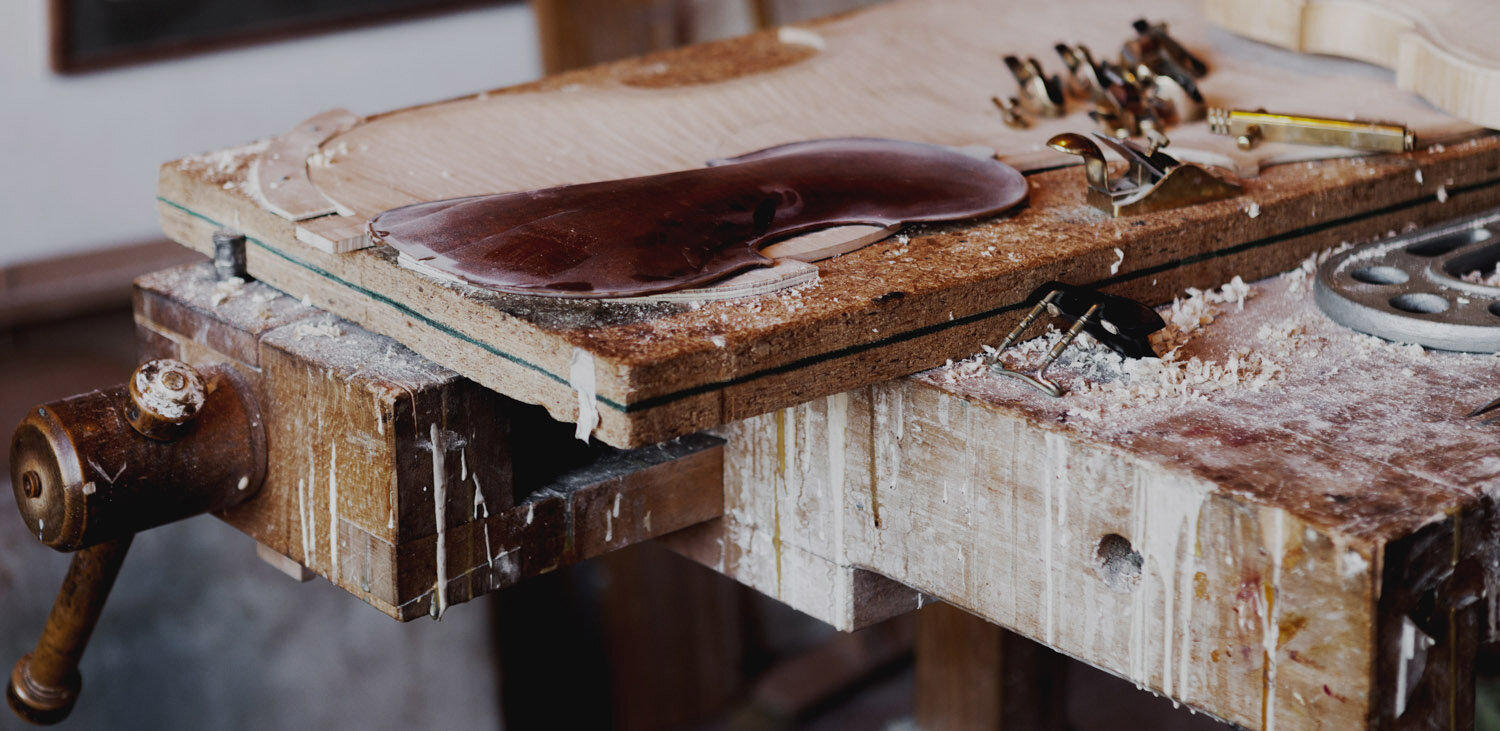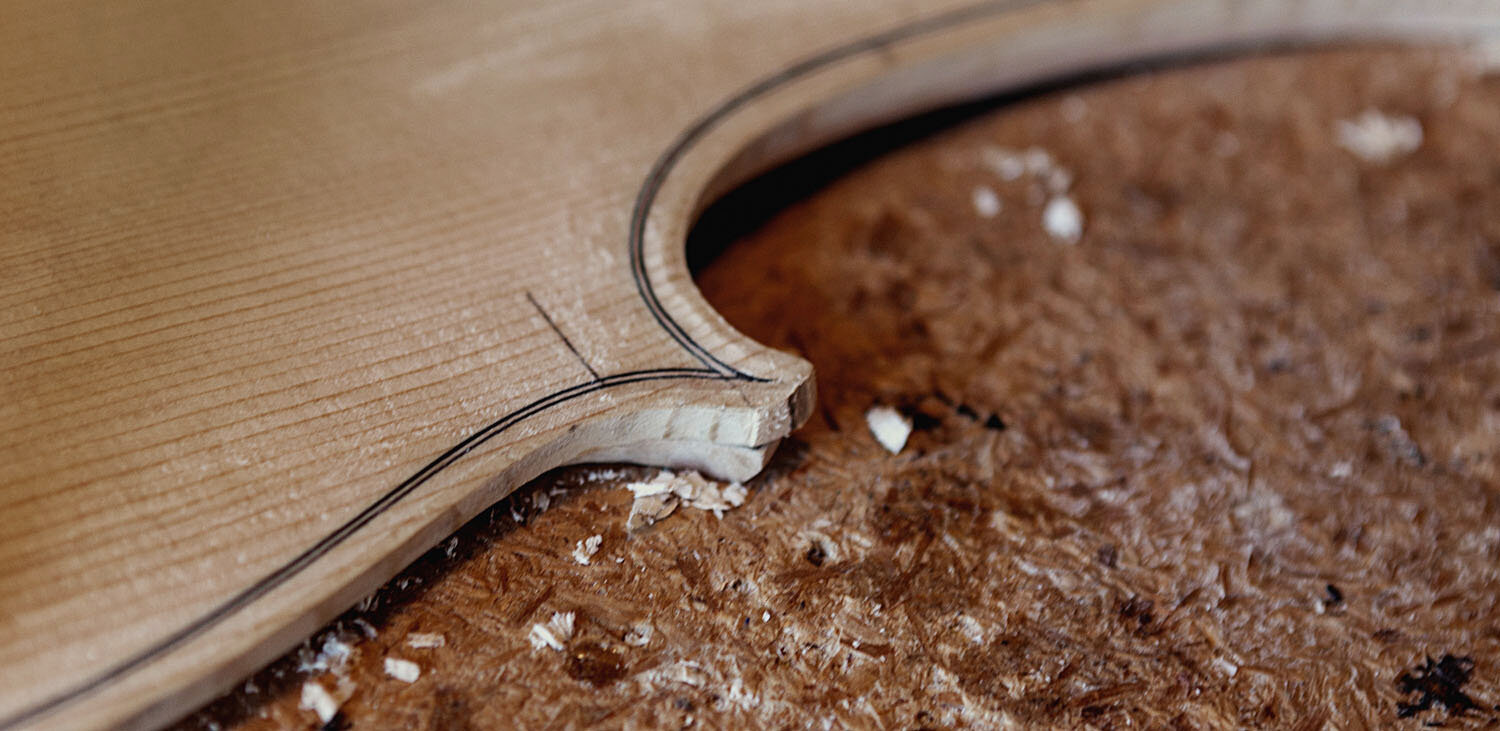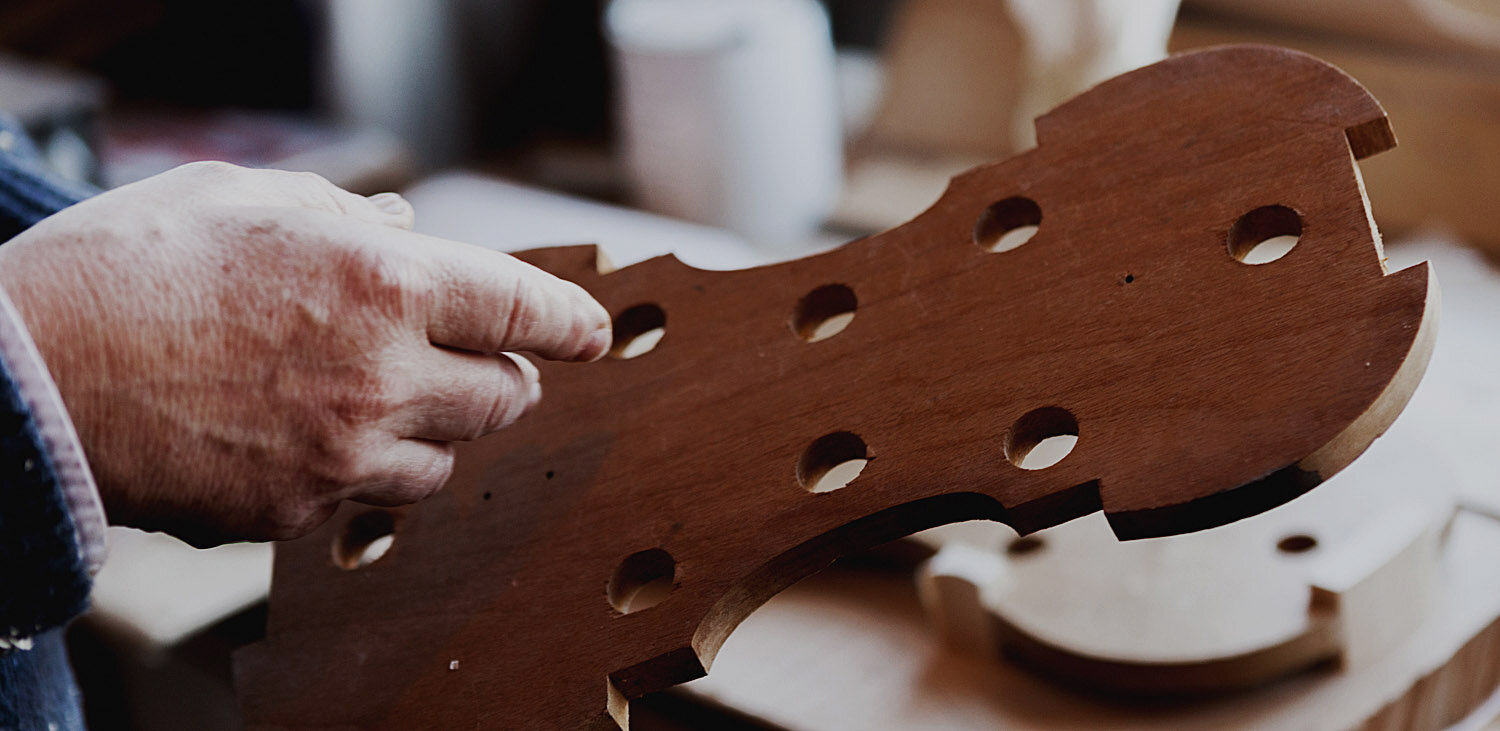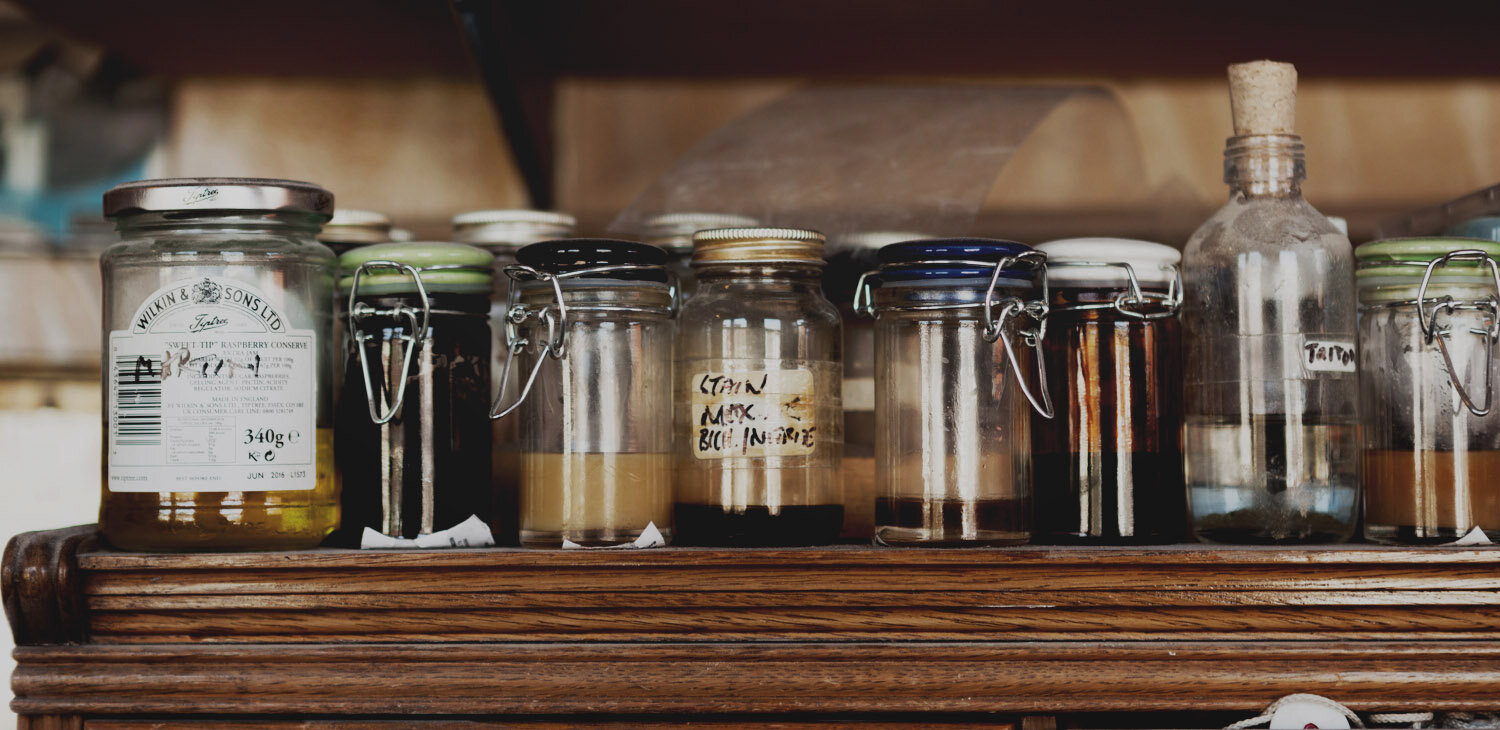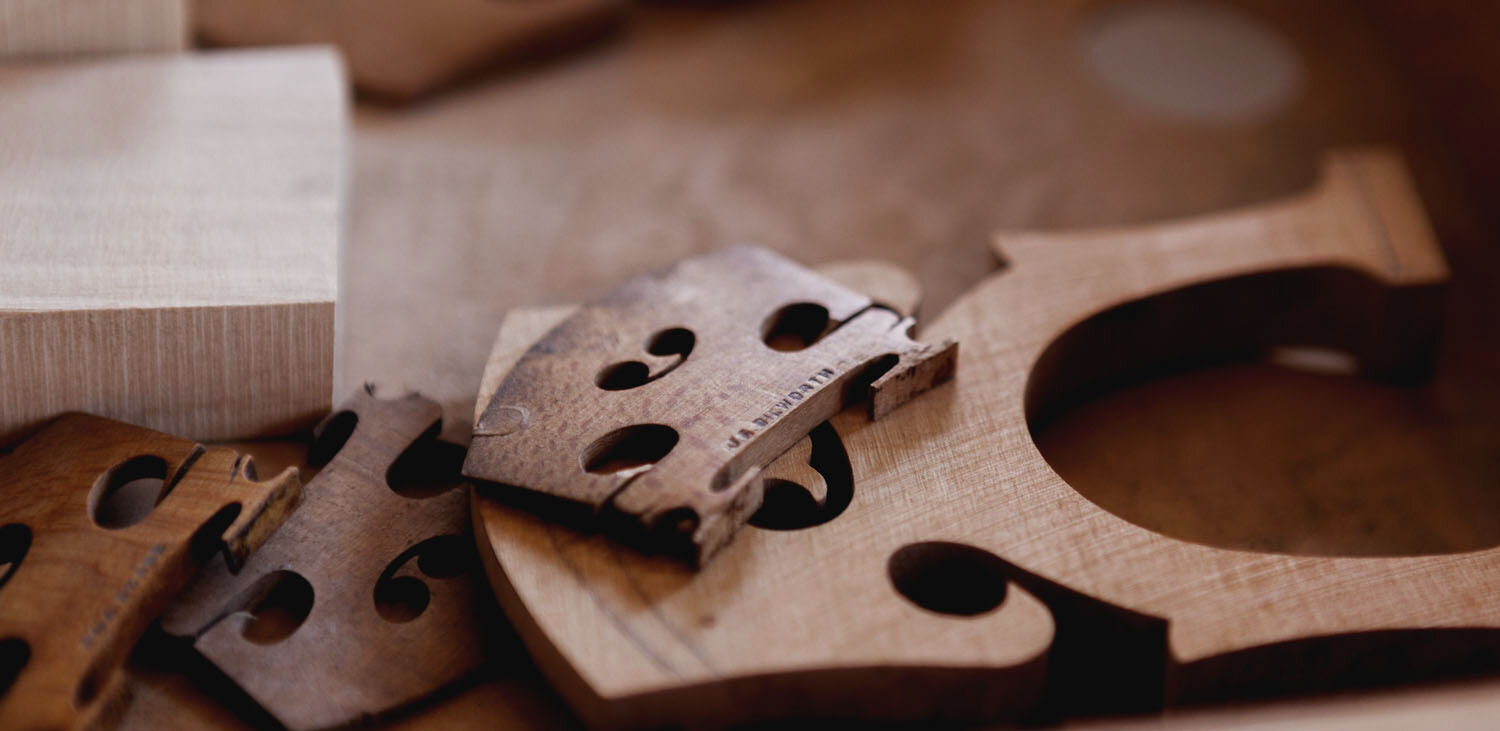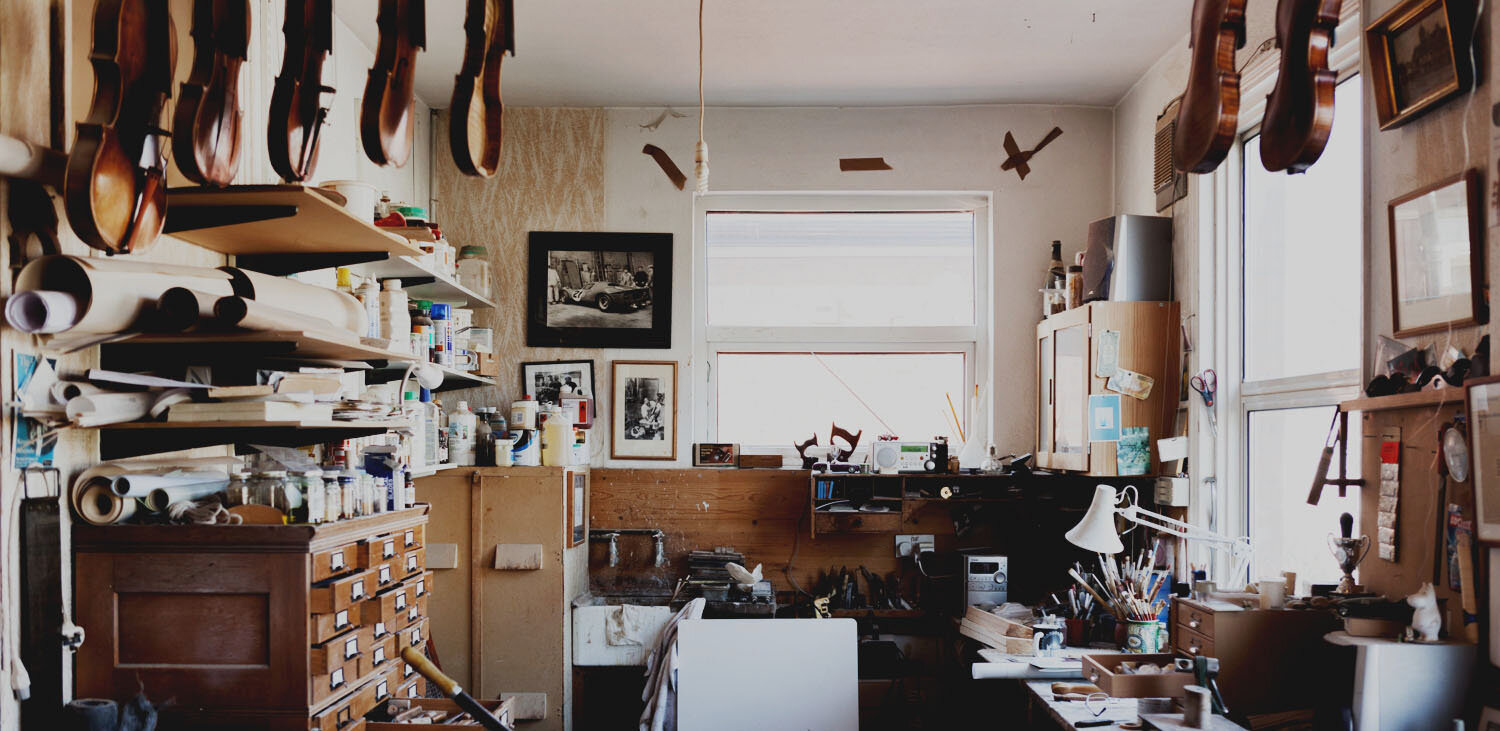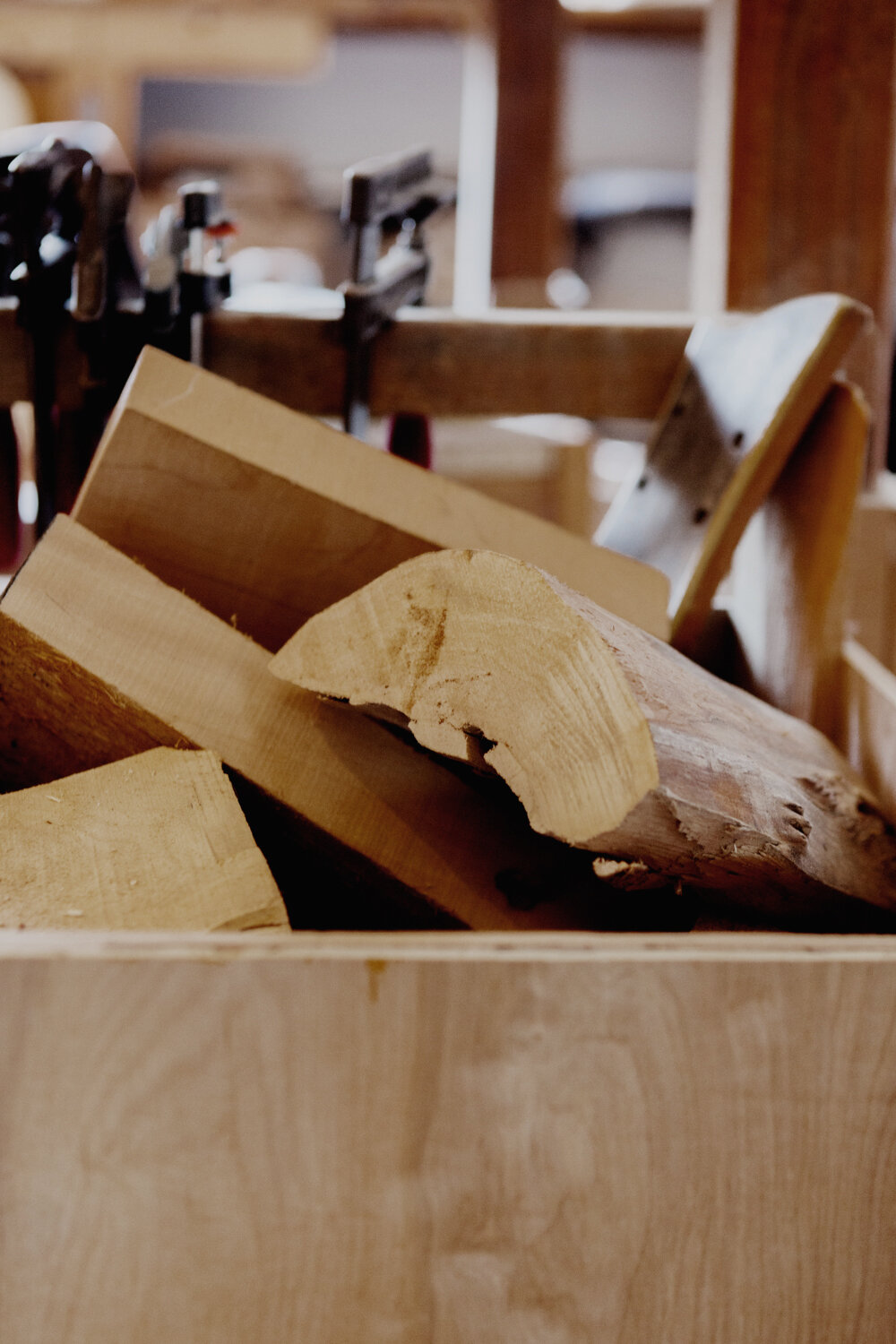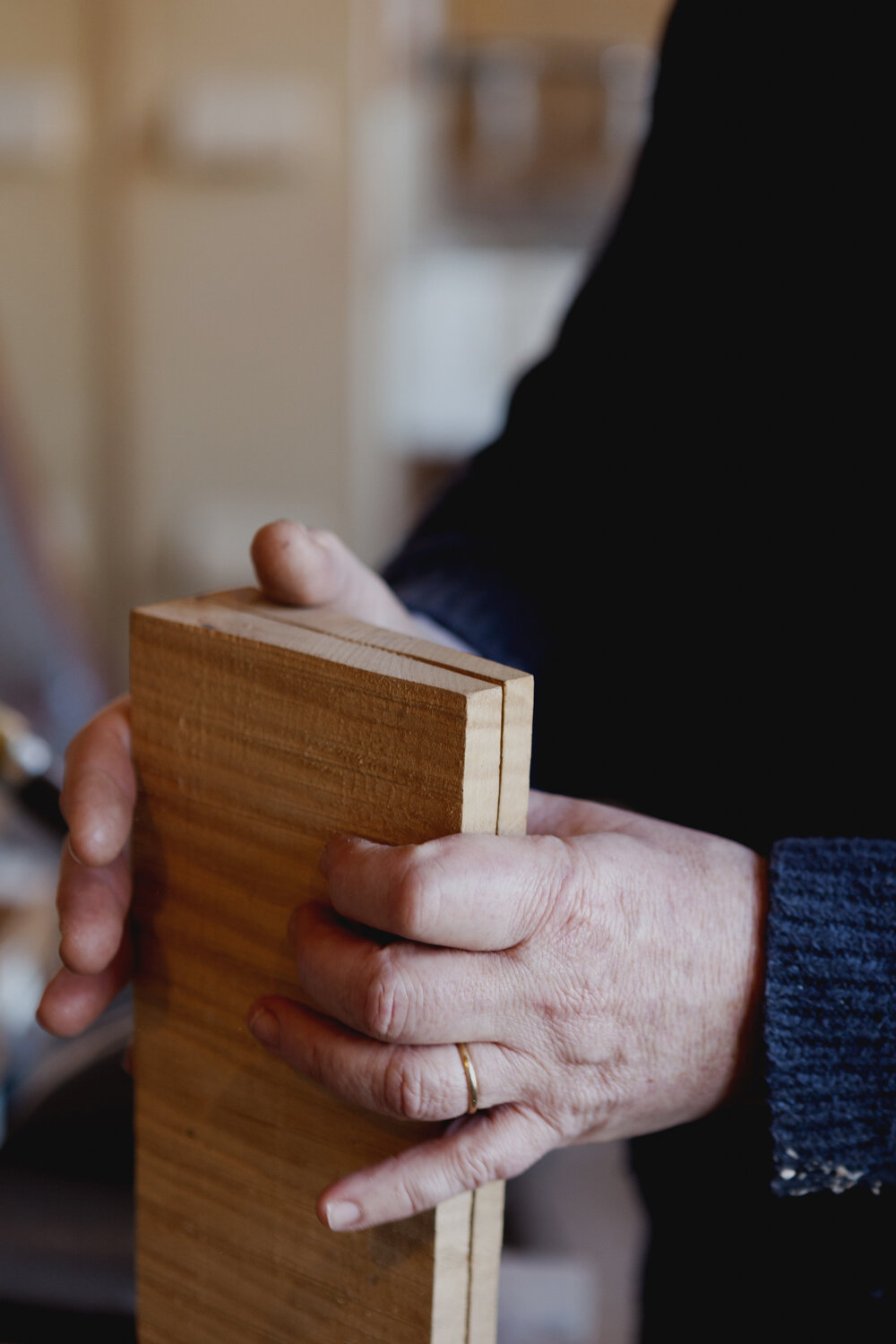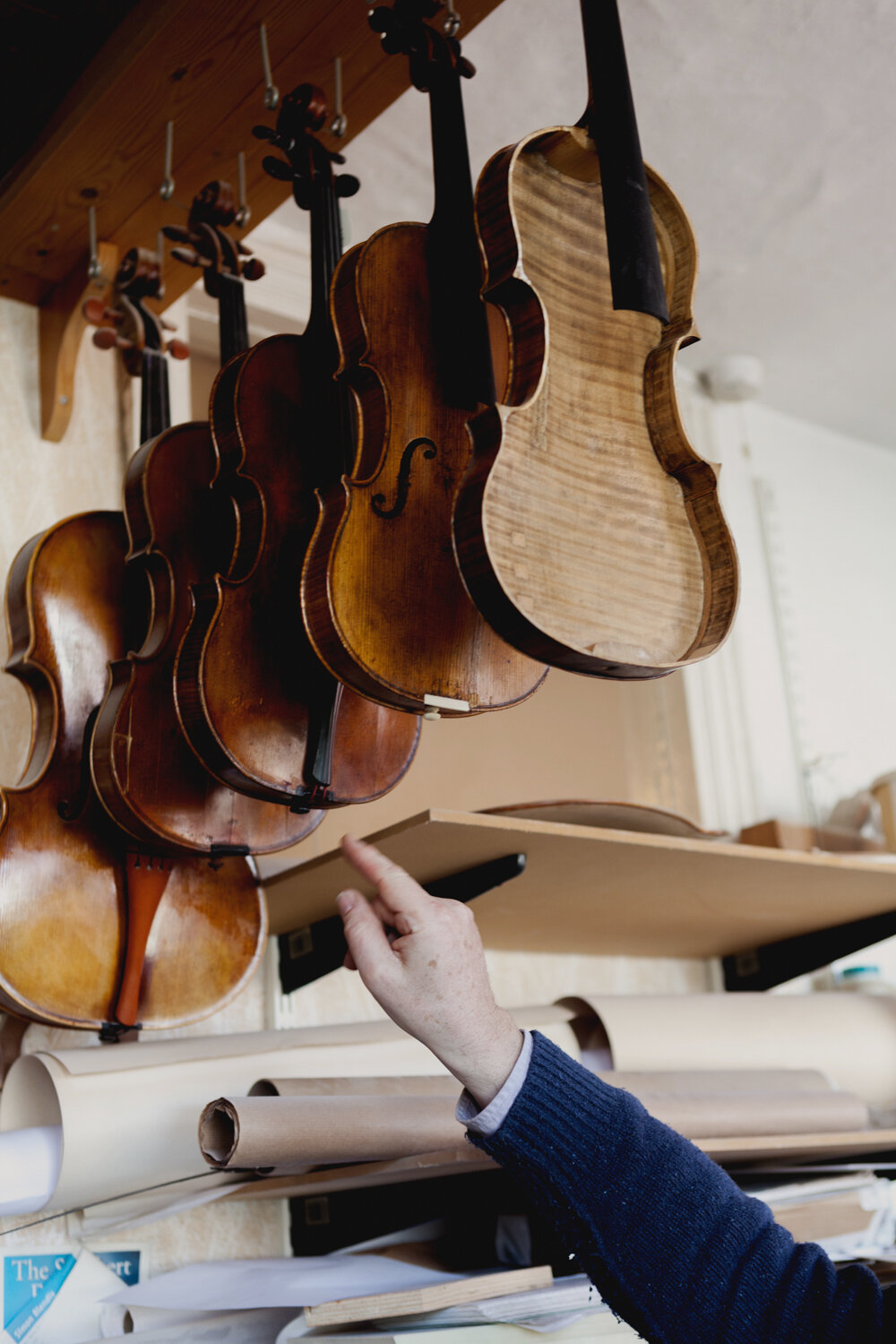John Dilworth
VIOLIN, VIOLA AND CELLO MAKER
- LONDON -
This is an interview from 2015. Visit Johns website to see what he is up to today.
A short stroll from the river Thames in Richmond and I arrive at John Dilworth’s front door.
With a warm welcome I’m led upstairs to his workshop. The sun has happily reappeared from this morning’s misty eclipse, almost apologising for its neglect by wrapping every object in a soft light.
The smell of English breakfast tea and wood slowly drifts around the room to the sound of Radio 4. “I don’t understand how they made violins without tea back in the day” John says. The first thing I learn about John is that at one time he aspired to be a professional Violinist. Though he soon discovered his special skill lay in making them not playing them.
“I’m very happy at the moment, we’ve just started building four new instruments”. John explains that this is the fun part, seeing the flat pieces of wood being transformed into structures.
Towards the end of the process it becomes more niggely with just fine, small adjustments.
“The musician has an idea of how great it can be, and if you can’t make that happen it can get very tearful”.
Handing over the instrument at the end is the most nerve wracking and emotional part. “The musician has an idea of how great it can be, and if you can’t make that happen it can get very tearful”.
John left college in 1979 where he studied violin making and since then has only worked making and repairing violins, violas and cellos.
He set up the workshop in his home in Richmond, and regularly has apprentices coming in to learn about the art.
Rob, who’s working here today, tells me he loves how the craft is so hands-on, surpassing the limited and clinical capabilities of modern equipment and technology. For example the use of traditional animal glue invented by the Egyptians, which makes repairing a violin far less painful.
At just the right temperature the glue melts and the violin neatly falls apart with no breaks. The violin hasn’t changed much since its invention. John explains the biggest change was probably in the 18th century when Paganini, one of the first super-star violinists, extended the fingerboard. This, naturally, resulted in him being able to play more advanced music and so other violinists started to follow his lead.
“Actually, a professional musician will aspire to own an old instrument. It develops and matures with age and the old instruments are always preferable”.
Many of the oldest, most respected instruments have a price tag in excess of one million pounds, which will result in musicians renting an instrument rather than buying one.
As for John, he doesn’t get to be so creative in his profession. Most of his clients come in with a specific violin in mind, and part of the process is then to copy that violin’s sound and appearance as well as he can.
When I ask where he sources the wood he tells me there is a group of Hungarian wood dealers that drives around offering maple to the violin-makers. John also gets timber from lots of other sources, wherever he can find good stuff.
Other than the maple he uses for the back, ribs, neck and scroll he uses spruce for the top, and ebony for the fingerboard.
Making a violin takes about a month’s worth of man power, though one needs to order a year to eighteen months in advance. This allows for the time consuming procedure of researching and sourcing the materials, getting the details in the grain right, the curve of the arch, the perfectly fitted bridge and the meticulous way John applies his homemade varnish.
For the man on the street all violins might look the same but I can assure from listening to, and feeling John’s careful creations, there is a huge difference in each and every instrument leaving his workshop.

